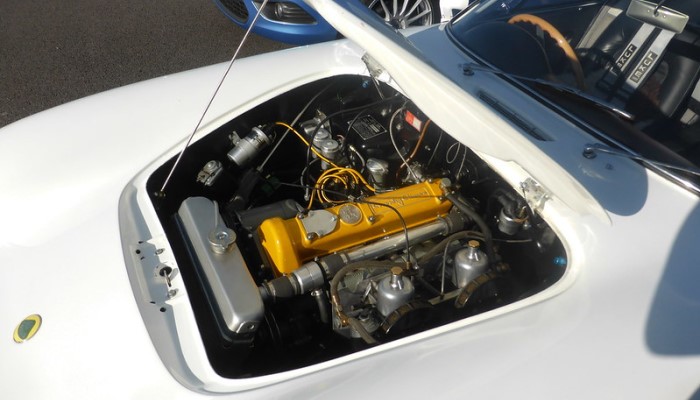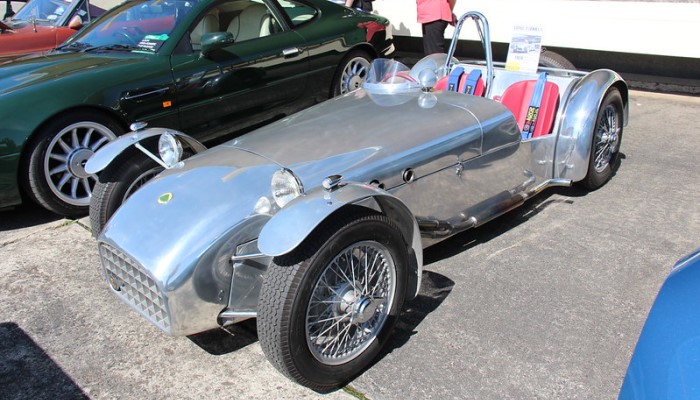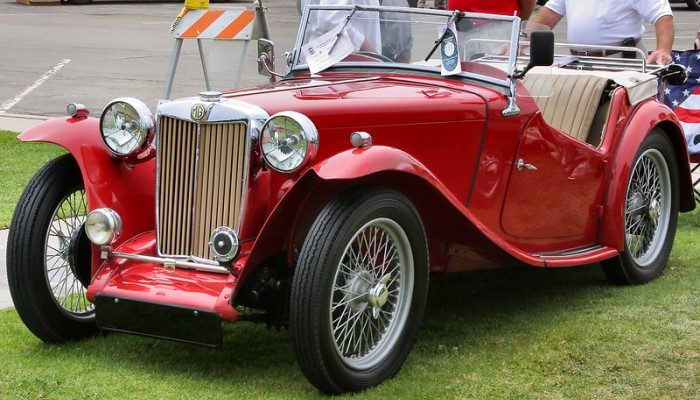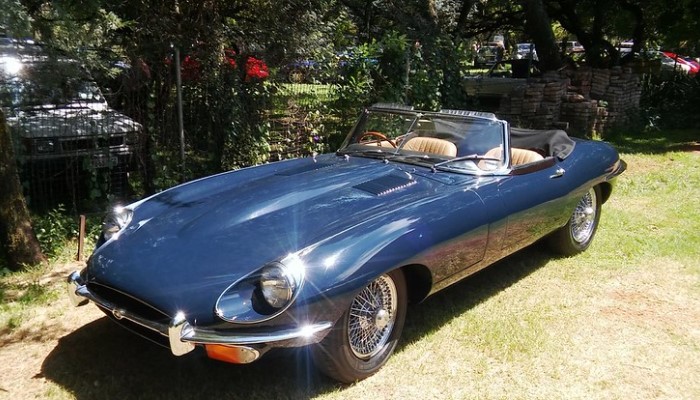Lotus Elite Type 14

Photo: "Lotus Elite" by exfordy
A Great GT in Miniature
It was this model that became a turning point in the history of the company. The Elite was Lotus' first creation, designed more for "peaceful" road travel than uncompromising racing. It was the first in a line of fine sports cars and GT models, each with original technical solutions.
The elegant compartment was an excellent starting point for the activities of a small company. And his appearance at the London Motor Show in October 1957 was a complete surprise to the public and experts.
The all-fiberglass construction - both the body and the chassis were made of this material - together with a number of other technical innovations, made it a completely exceptional design. At the same time, one should not forget that the company that created it did not have large resources.
Thanks to Lotus boss Colin Chapman's racing background, the Elite had excellent handling. Together with an unprecedented power-to-weight ratio, this quality has brought the car many victories in various competitions. In addition, this model was recognized as one of the most beautiful cars of its time. In short, a great GT in miniature.
Lotus Elite Interior
Even tall people behind the wheel of the Elite felt comfortable. The award-winning interior was sleek and tidy, with light, modern materials. The main instruments were a speedometer with a top mark of 140 miles per hour and a tachometer, the scale of which ended at 8000 rpm.
By the way, The Motor magazine tested it in 1960 and came up with these results: Maximum speed - 112 mph; Acceleration 0-60 mph - 11.4 s; Fuel consumption - 6.97 l/100 km (33.7 mpg).
The ventilation system was built into the cockpit. Air entered through openings in the hood and exited over the rear window. There were plenty of pockets inside the Elite, especially in the doors. They allowed to increase the amount of luggage carried.
Coventry Climax Engine

Photo: "Lotus Elite (1962)" by andreboeni
A light motor with a working volume of 74 cu in (1216 cc) was supplied by Coventry Climax. It became a further development of its racing engines. Engine power on the second series Elite has increased from 75 to 83 hp. And with the help of additional devices, it could be brought up to 100 hp.
The Boss
An established racing driver in the past, Colin Chapman founded Lotus Cars in 1955. His first major achievement as a carmaker was the superb Elite, followed by the well-selling Elan.
In the 1970s, Chapman expanded his commercial empire by creating a complex network of branches in offshore zones. Colin Chapman loved to solve difficult problems. He was a brilliant engineer and a ruthless businessman for whom nothing was impossible.
Lotus Elite in Motorsport
The Lotus Elite was iconic for race victories and a style breakthrough in automotive design, but the little coupe also had a career in motorsport. The compact and lightweight coupe lent itself well to racing, and Lotus saw success in a variety of different series with the Elite.

Photo: "1960 Lotus Elite" by Dave Hamster
The Lotus-Climax Elite, powered by a twin-cam 1.5-liter Coventry Climax engine, earned success on European circuits such as the Nürburgring (1000km). But its greatest glory came at the 24 Hours of Le Mans, where the Elite clocked up the first-ever Le Mans victory for a coupe in 1960.
The success of racing version of the Lotus Elite helped bolster its reputation among automotive enthusiasts, who liked the coupe’s combination of performance and style. Although the coupe was eventually discontinued in 1963, the Elite continues to have a dedicated following even today.
Elite Type 14 in Today's Market
Due to the immense popularity of the car, the Elite has become a highly sought after model in the classic car world. It is one of the most collectible models, and as its value increases, so too does its desirability.
The Elite is considered to be an icon of British design, engineering, and craftsmanship. It has a loyal following of admirers and is a fixture at the most prestigious classic car events.
In today's market, a pristine, original unrestored Elite can fetch anywhere between $40,000 and $250,000 - depending on the model and condition. A well-restored version can easily exceed $130,000.
How many Lotus Elite Type 14 were made?

The short production run means that only 1,020 Type 14s were ever manufactured. This includes five prototypes, 1,010 customer cars, and five pre-production models.
Of those, only 722 were officially sold. Although some Type 14s have been destroyed over the decades, the true number produced remains 1,020.
Although the Type 14 was groundbreaking in many ways, it wasn’t a commercial success. Limited production numbers caused Lotus to end its run in 1963 in favor of producing more profitable models. Despite its shortcomings, the Type 14 has had a lasting influence on the automotive industry.

Unique Car Zone Team
A group of several fans of everything that moves on four wheels, a few article creators, a couple of marketing strategists, designers, web developers, and lots of coffee.






